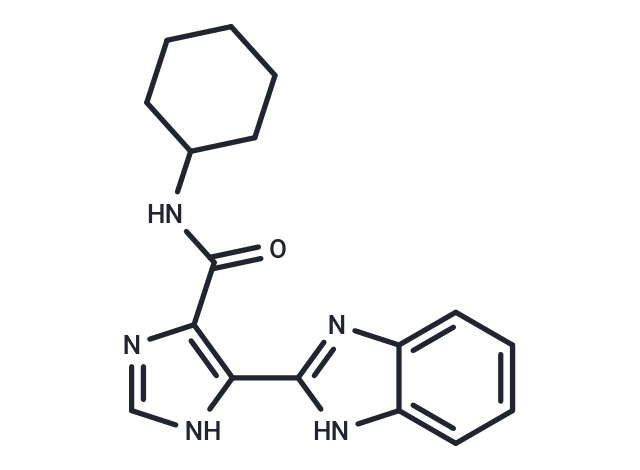Shopping Cart
- Remove All
 Your shopping cart is currently empty
Your shopping cart is currently empty

Autophagy-IN-2 (Compound 7h) is an autophagic flux inhibitor that induces cancer cell apoptosis, making it a valuable agent for triple-negative breast cancer research [1].

| Pack Size | Price | Availability | Quantity |
|---|---|---|---|
| 25 mg | $1,520 | 6-8 weeks | |
| 50 mg | $1,980 | 6-8 weeks | |
| 100 mg | $2,500 | 6-8 weeks |
| Description | Autophagy-IN-2 (Compound 7h) is an autophagic flux inhibitor that induces cancer cell apoptosis, making it a valuable agent for triple-negative breast cancer research [1]. |
| In vitro | Autophagy-IN-2 (Compound 7h), across a concentration range of 0-200 μM for 48 hours, exhibits anti-viability effects on various cancer cell lines, as evidenced by its IC 50 values across a panel including MDA-MB-231, MDA-MB-468, and others. At lower concentrations (0-20 μM) and varying time points up to 48 hours, this compound disrupts autophagic flux and DNA repair mechanisms by decreasing chromatin ubiquitination, linked to a p62-dependent process. Additionally, Autophagy-IN-2 triggers cell cycle arrest in the S-phase and initiates mitochondrial-dependent intrinsic apoptosis. Western blot analysis reveals a dose and time-dependent increase in LC3B-II, p62 accumulation, and DNA damage markers in treated TNBC cells, alongside modifications in cell cycle and apoptosis-related proteins. Cell cycle and apoptosis assays further confirm the compound's ability to induce S-phase arrest and significantly enhance apoptosis, particularly late-phase, in a dose-dependent manner in TNBC cells. |
| In vivo | Autophagy-IN-2 (Compound 7h), administered intraperitoneally (i.p.) at 5 and 15 mg/kg every three days for three weeks, dose-dependently suppressed tumor growth in six-week-old female NOD/SCID mice with MDA-MB-231 xenografts. This treatment inhibited human TNBC tumor growth and increased the expression of LC3B-II, p62, γH2AX, and PARP in a concentration-dependent manner. |
| Molecular Weight | 309.37 |
| Formula | C17H19N5O |
| Cas No. | 2755454-90-9 |
| Storage | Powder: -20°C for 3 years | In solvent: -80°C for 1 year | Shipping with blue ice. |

Copyright © 2015-2025 TargetMol Chemicals Inc. All Rights Reserved.